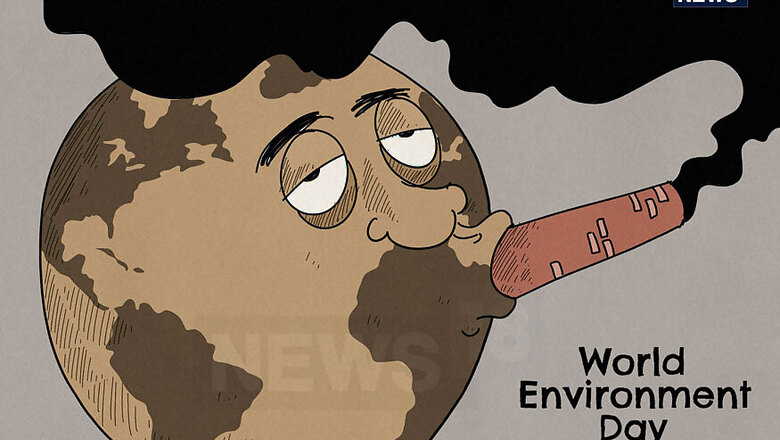
views
New Delhi: Even as India hosted this year’s World Environment Day on Tuesday and pledged to fight plastic pollution, the country is still beset with microbeads, one of the most insidious forms of the polluting compound.
Though the Bureau of Indian Standards (BIS) banned the use of microbeads in cosmetics in October 2017, it will only be implemented in 2020. This means that for two more years, tonnes of plastic grains, measuring anywhere between one and five micrometres, will be used unchecked in cosmetics, creams and soaps.
Too small to be filtered out by commonly used sewage treatment plants, microbeads may not make up the bulk of the estimated 12 million metric tonnes of plastic entering oceans and other water bodies around the world every year, but they are nearly impossible to be sifted out of the water.
So far, New Zealand, the United States, India and, from this January, Canada and the United Kingdom, have banned the use of microbeads.
In October 2017, after a year-long case in the National Green Tribunal (NGT) — the country’s green court — the BIS came out with a list of substances that could not be used in cosmetics. This included plastic microbeads.
According to Ashwini Kumar, the Delhi-based lawyer who took the case to the NGT in 2016, there was no real estimate of how much microplastic enters the environment and eventually, the water. All data, he said, was presumptive at best.
However, “test the table salt in your kitchen, of any brand, and you’ll find microbeads in there,” said Kumar. That is the level of saturation of plastic in water bodies.
“It’s not realistic to ban all plastic,” added Kumar. “It is a by-product of oil and gas and it makes business sense to use all that residue instead of storing it forever.” The lawyer was more bothered by how it was being used, in particular, as microbeads.
Once in water, the grains don’t entirely sink to the bed of the river or ocean. Instead, they stay suspended as other microorganisms wrap themselves around them, and eventually get eaten by fish. Else, when the water is evaporated in salt pans, they stay behind with grains of salt. Usual methods such as sedimentation cannot remove the plastic from salt, said Kumar, pointing out the ways through which microplastics enter the food chain.
“This has been happening for 20 years, ever since the shells of walnuts and almonds became too expensive to be used as scrubs in cosmetics,” he said.
What worries Kumar is that cosmetics are only one part of the problem. Even if companies implement the ban from 2020, the microplastics will still be used in several forms of textiles.
To understand what all needs to be banned may be too much work for one man, he says, adding that each product from big and small general stores would have to be taken stock of and he would have to make a host of companies and manufacturers party to cases in the NGT.
Once the ban comes into effect, the implementation will fall to the Central Drugs and Standards Control Organisation (CDSCO), which, Kumar fears, is too swamped with monitoring pharmaceuticals to worry about freely available creams and cosmetics.




















Comments
0 comment